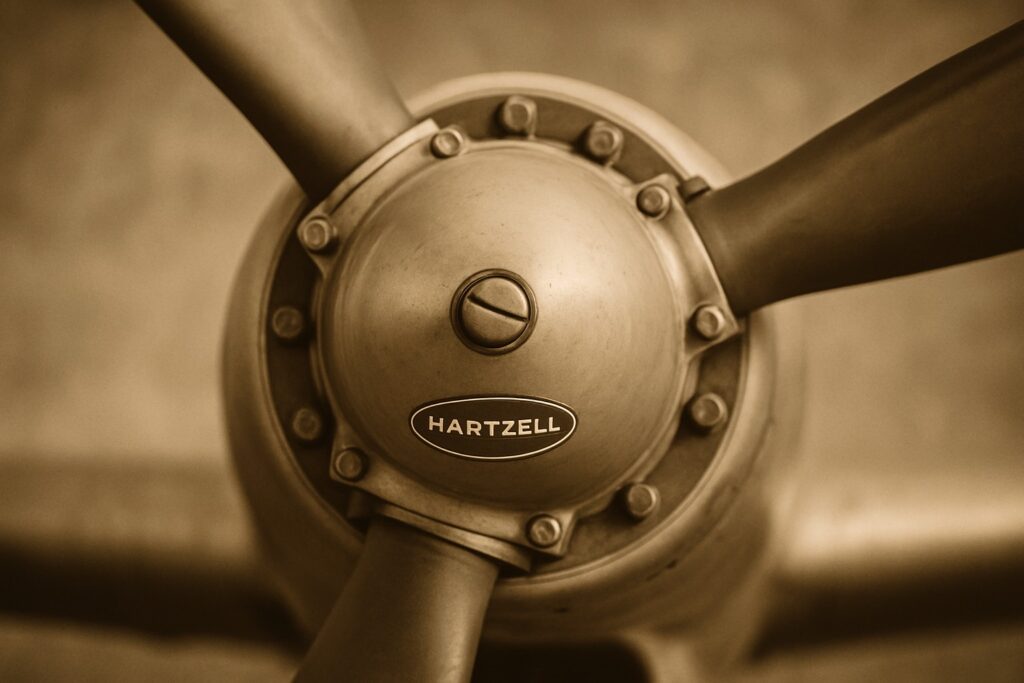There have always been strong warnings about mixing different types of greases, especially in aviation. While these warnings apply to bearing greases and other lubricants used throughout an aircraft, none has drawn as much attention recently as the grease used in propellers.
Over the past few years, several propeller manufacturers have transitioned to NYCO GN3058 grease. I learned about NYCO grease a couple of years ago. But mixing NYCO GN3058 with traditional greases like Aeroshell 8 can lead to serious consequences. When these two greases are combined inside a propeller, the resulting mixture becomes overly fluid when the propeller is in motion. It thins to the point where it leaks past seals, creating a mess inside the spinner, along the cowling, and sometimes even forming a fine film on the windshield.

I have run into the mixing of these two greases on a number of occasions and it was very noticeable. As mentioned it makes a mess, but more noticeable is when servicing the propeller with grease the grease that comes out of the hole from the removed zerk is a gray color. Not sure how it does it, but sitting, the grease looks like the structure of normal grease, but when the propeller starts to turn, it changes to a liquid from what the tech support guys say.
This isn’t just a housekeeping issue—it’s a critical lubrication failure. The propeller is no longer properly lubricated, which can lead to mechanical damage. The only fix is to send the propeller to a certified prop shop for full disassembly and cleaning—a costly and time-consuming repair.
NYCO GN3058 is quickly becoming the standard for many propeller manufacturers. We’ve seen several overhauled propellers return with a GN3058 placard affixed to the hub. These placards are typically black with yellow lettering—easy to spot if you’re paying attention. However, if someone unknowingly services the propeller with incompatible grease, cleanup is unavoidable. Some manufacturers offer service letters allowing temporary operation after contamination, but all recommend a full cleanout as soon as practical to protect the propeller.
Always Use the Aircraft Maintenance Manual
When lubricating any part of an aircraft, always refer to the Aircraft Maintenance Manual (AMM). It specifies not only the lubrication points but also the exact type of grease required at each location. Many modern manuals include detailed photos and charts. However, some still require cross-referencing between images and tables to determine the proper lubricant.
Special Lubrication Procedures to Note
Some manufacturers require specific chemicals or procedures beyond general greasing. For instance, Cessna recommends applying corrosion-resistant compounds to landing gear axles to protect them from moisture encountered during taxiing, takeoff, or landing on wet surfaces. Another example involves applying anti-seize to the entire nose axle of certain aircraft—not just the threads. The anti-seize compound contains corrosion inhibitors that outperform standard grease for long-term protection.
Choosing a Grease Manufacturer
While we don’t endorse any one brand, we’ve used Aeroshell products for decades due to their reliability and easy to obtain in our area.
- Aeroshell 5: A versatile, general-purpose grease suitable for high-speed wheel bearings and engine accessories operating under high temperatures and RPMs. It is commonly used on magnetos and turbine starter/generators.
- Mobilgrease 28: Preferred by many manufacturers for wheel bearings, especially where extreme temperature performance is required.
- Aeroshell 6: Recommended for antifriction applications such as bearings and gear setup.
- Aeroshell 7: Designed for general-purpose use—landing gear pivot points, flap actuator jackscrews, and some instrument applications.
- Aeroshell 8: Historically used in propellers. However, with the rise of NYCO GN3058, it’s important to follow your propeller manufacturer’s exact recommendation and check the hub placard before servicing.
Why NYCO GN3058 Is Gaining Ground
One reason manufacturers are shifting to NYCO GN3058 is its excellent corrosion resistance. While Aeroshell 8 also contains corrosion inhibitors, NYCO emphasizes this feature heavily. That said, I’m not a chemist, so I can’t compare them definitively. What matters most is that you never mix greases unless the manufacturer specifically states they are compatible.
MIL-SPEC: The Industry Standard for Grease
Many maintenance manuals refer to lubricants by their MIL-SPEC (Military Specification) number. This is essentially the government’s “recipe” for how a lubricant must be formulated. Multiple manufacturers may produce grease that meets a specific MIL-SPEC, making it easier to match the required spec with available products.
Practical Lubrication Tips for Aircraft Owners and Pilots
- Grease breaks down over time, especially in high-heat, high-vibration environments. If practical, remove old grease during maintenance, especially from bearings. This not only ensures fresh lubrication but also allows you to visually inspect for wear or damage.
- Ensure surfaces are dry before applying new grease. Residual solvent from cleaning agents can break down grease prematurely.
- Verify all grease fittings (zerks) accept grease. Clogged zerks prevent proper lubrication and can cause component failure.
- If a zerk fitting appears blocked or damaged, replace it rather than attempt cleaning. With labor rates where they are today, replacing a zerk—usually under $2—is far more economical than a mechanic spending time trying to clear it.
Final Thoughts
Aircraft lubrication is more than routine maintenance—it’s a critical aspect of airworthiness and safety. As grease technology changes and manufacturers adopt new standards, pilots and owners must stay informed. The cost of using the wrong grease—or mixing incompatible ones—is often much higher than people expect.
If you’re unsure what type of grease is approved for a component, don’t guess. Consult the AMM or reach out to your trusted maintenance provider. At Angelo Precision Aircraft, we’re happy to help answer questions and ensure you’re using the right product for your aircraft.
If you need help finding you lubrication needs for your aircraft call Angelo Precision Aircraft at 325-949-0643 or email shinds@shindsprecisionaircraftservices.com and we will be more than happy to help you look it up and get you the information that you require.
